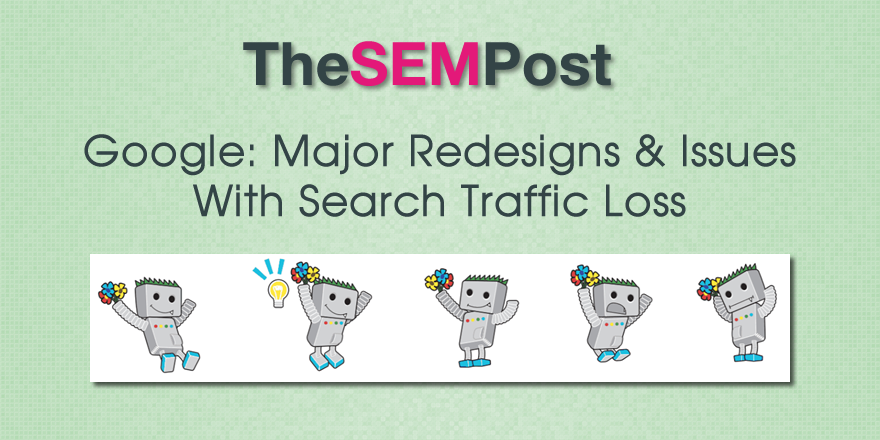
Some of the changes made by the site, which already had millions of pages, included a redesign as well as splitting up many millions of pages – including the homepage – into many smaller individual pages. On average, each of these longer static HTML pages was split into roughly four new pages, a main page and three subsections. The site changed from static pages to these new subsections being served with AJAX and some additional serving with javascript. Additionally, each of these pages acts like a single page app.
So not only do you have the technicalities for the redesign, you also have the content dilution issue which likely devalued each page when it was split into four new pages. The site owner essentially “flipped the switch” to replace the entire site with the new version, and subsequently saw a dramatic drop off in traffic.
Most SEO experts would recommend moving a section at a time, to watch for any issues that pop up during the migration, rather than doing millions of pages at once. The same when it comes to splitting pages into multiple ones, because of the dilution of both content and links for those pages. And John Mueller from Google seems to agree with that type of strategy.
First, Mueller addressed the issue of dividing single pages into multiple pages, and how it can dilute the value.
Next, he talked about the value of testing before switching over a huge site all at once.
In general, something like this is something I try to test before switching it across the whole website. Obviously afterwards that is probably easier top kind of see, but it’s something where especially when you’re making bigger changes across a website that could affect search like this, then taking a kind of significant sample of your pages making those changes and seeing how that’s reflected in search. That’s usually what I would recommend doing there.
He also had a suggestion on testing this after the move has been made, that it might make sense to revert some of the changes on a section of the site to see if the site’s rankings bounce back for those pages.
What I might consider doing is just double checking it from an a/b testing point of view regardless, even though it’s kind of like you already moved. Maybe take a small section of your site and put that back on to single pages essentially. And see if you can measure a difference between the search traffic going to the single pages versus the search traffic going to the kind of split up pages and kind of try to figure out is this something that works for me or is it something that actually causes problems.
Is the difference in search maybe you’re relevant and maybe just the site overall has just changed in search over time? That might also be an aspect to try out there.
Many people are reluctant to roll back a complete redesign, so rolling back a section makes sense, so it is easier to determine if it is an issue with the new version or something unrelated, such as a major core update happening at the same time. But it does make sense when there is such a significant loss of traffic that doesn’t resolve itself after Googlebot has recrawled the new version of the site.
Jennifer Slegg
Latest posts by Jennifer Slegg (see all)
- 2022 Update for Google Quality Rater Guidelines – Big YMYL Updates - August 1, 2022
- Google Quality Rater Guidelines: The Low Quality 2021 Update - October 19, 2021
- Rethinking Affiliate Sites With Google’s Product Review Update - April 23, 2021
- New Google Quality Rater Guidelines, Update Adds Emphasis on Needs Met - October 16, 2020
- Google Updates Experiment Statistics for Quality Raters - October 6, 2020